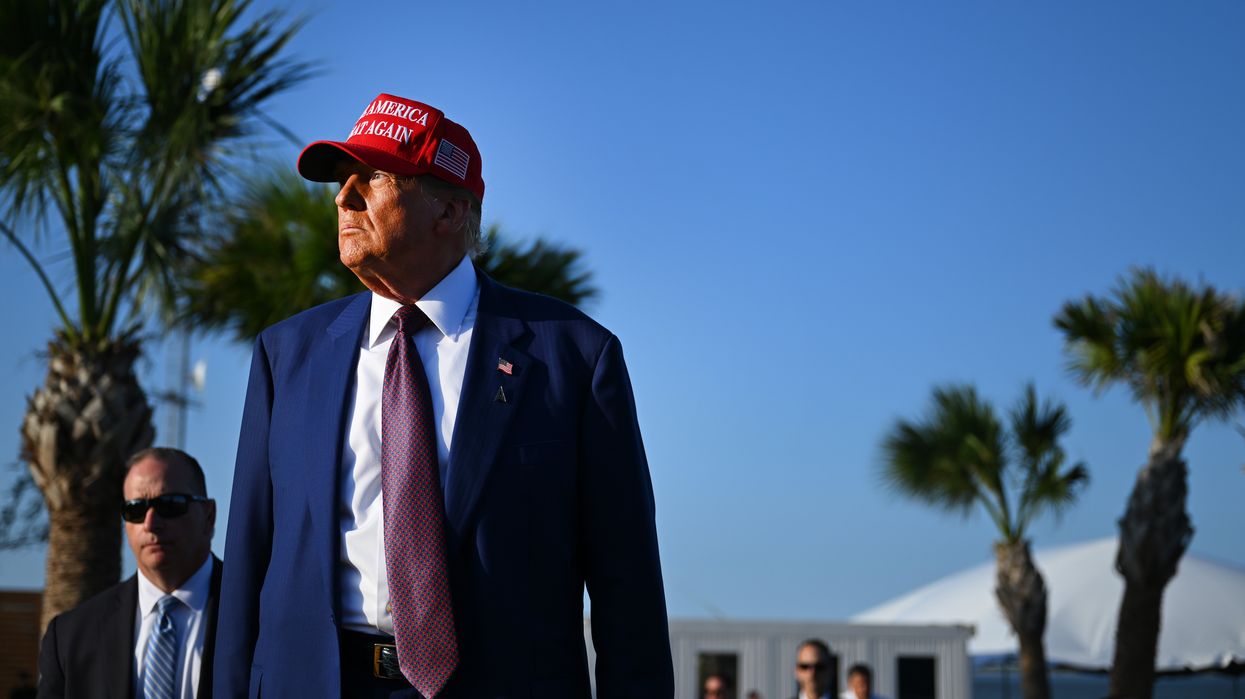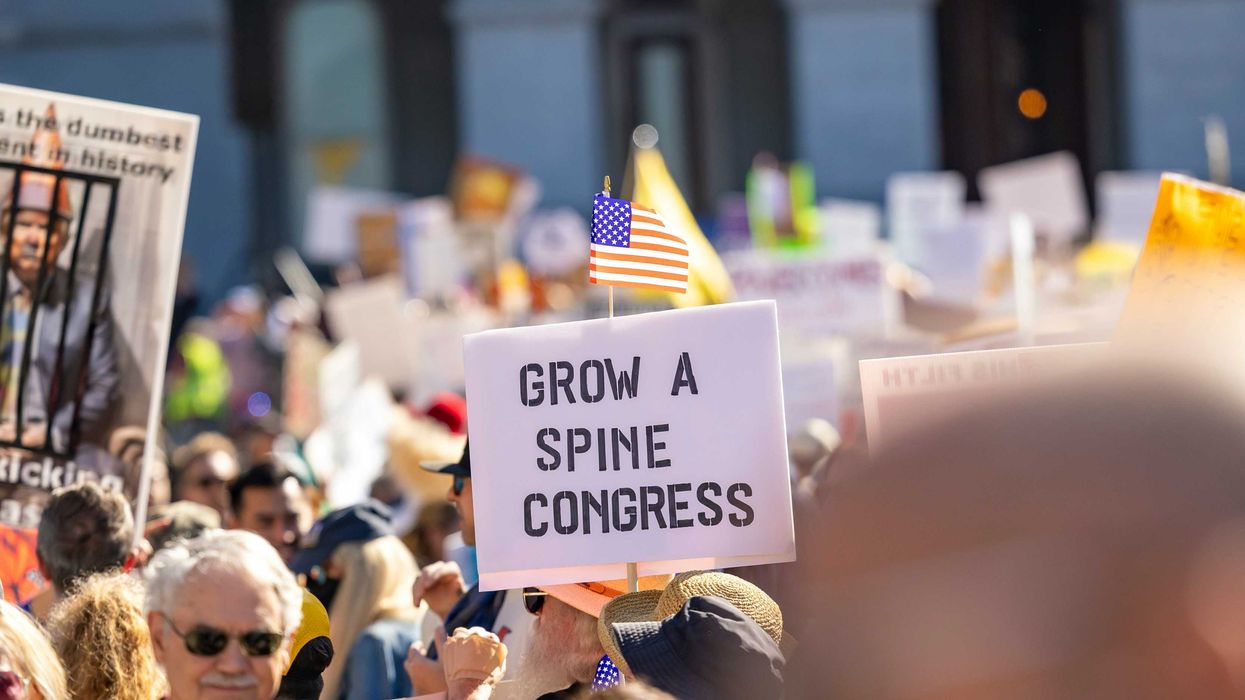With Trump’s return to the White House, we once again bear daily witness to a spectacle that could be described as entertaining, were it only a TV series. But Trump’s unprecedented assault on our democratic norms and institutions is not only very real but represents the gravest peril our democratic republic has confronted in the last 80 years.
Trump’s gradual consolidation of power and authoritarian proclivities, reminiscent of an earlier era, are very frightening on their own account. But it is his uncanny ability to control the narrative that empowers him to shred our nation’s fabric while proceeding with impunity. His actions not only threaten the very republic that he now leads but overturn the entire post-WWII world order, which is now in chaos. Trump has ostensibly cast aside the governing principle with the U.N. Charter of Sovereignty. By suggesting on multiple occasions that the U.S. will “get Greenland one way or another,” and that Canada might become our 51st state, our neighbor to the north is now developing plans to protect itself from what it views as the enemy across the border.
So, how did we get here?
I originally began researching this very question a few years back during the first Trump administration. My investigation culminated in a book, American Schism, which argues that we cannot comprehend today’s polarized political landscape without historical context. To understand our contemporary divisions and address how we might bridge them, we need to determine their source and appreciate their evolution over history. The book’s investigative tracing of the antecedents leads us back to our founding in the late 18th century when the original seeds were planted. In fact, today’s acrimonious split is largely derivative of that first American Schism, which arose during our founding.
In this era, once the Revolutionary War was won, our founders faced the daunting task of governing the newly independent nation. The original Articles of Confederation formed by the 13 former colonies were wholly incapable of addressing the urgent problems on the ground. It was in this context that the original American Schism first surfaced.
In this process of designing a blueprint, two distinctive governing visions vied for prominence. On one hand, founders like John Adams and Alexander Hamilton believed that the mechanisms of governance were enormously complicated and required the dedication of the best and the brightest. Pressing problems, such as addressing the war debt and establishing foreign allies, demanded pragmatic solutions with a broader purview that transcended the governing model of any of the individual states. The most educated leaders of the day deployed a range of competencies to forge intricately complex solutions with national scope. At the time, this governing model was referred to as an “aristocratic republic” and promulgated government by the elites.
In the other camp were Thomas Jefferson, Benjamin Franklin, and Thomas Paine, who believed that a representative democracy in which people selected delegates as advocates was the only sustainable republican form. Having emerged from the chains of the British crown, this group’s adherents were very circumspect of centralized power and favored governance closer to the dispersed communities and with strict limits on centralized power. Herein lie the origins of the deep distrust of elites and suspicion among what became known as “populists.”
The fight between these two factions became quite rancorous and drove the formation of the first political parties in our country: Hamilton’s Federalists and Jeffersonian Democratic-Republicans. Had it not been for the skill and foresight of James Madison, who bridged the two groups during its drafting, we might never have succeeded in ratifying the U.S. Constitution, the great compromise.
But, well past our founding period, these same tensions lingered and, in fact, have been omnipresent throughout much of history. Frequently, during our most difficult periods, this elite-populist tension festered below the surface. Underneath the partisan policy issues lie foundational yet unresolved questions: who should have the power to govern? To whom does the phrase “we, the people” vest governing authority?
As chronicled in the book, much of American history evinces a pendulum-like swing between the two conflicting answers to this core question. After 30 years of Federalist dominance, when much of the federal government foundation was originally established, the Jacksonian movement ushered in a new era of populism. Later, as the country industrialized in post-Civil War America, the elites in the Northeast—railroads, oil, banking—accumulated tremendous wealth in what became known as the Gilded Age. However, a bottom-up populist movement in the late 19th century, called the Farmers’ Alliance, confronted these powerful forces by educating and empowering independent farmers across the South and West. Despite limited initial success, reforms during the progressive era of the 1920s represented a pendulum swing back.
In the last decades of the 20th century, the U.S. establishment laid the foundation for a new globalist economy within which Americans could thrive. But today, the tables have turned once again as formidable populist forces strive to dismantle much of the very infrastructure built since the middle of the 20th century.
One of Trump’s great insights was to sense this latest reversal more than a decade ago. He astutely identified an accumulating mistrust in government amongst the working classes. Moreover, he adeptly weaponized this trend in his ultimately successful quest for political power. By demonizing coastal elites, Trump wielded a robust cleaver and split the elite-populist wedge wide open. By characterizing working-class rural Americans as “forgotten,” Trump reinforced their loss of faith in American institutions, a key theme of the MAGA era.
The globalist economic model underlying today’s schism
While the forces underlying the American Schism are omnipresent as mentioned above, their manifestation continues to evolve. In order to understand today’s vicissitudes, a 40-year perspective is valuable—within this timeframe the economic model we call “globalization” became dominant. Every economic model has winners and losers and, in this case, many Americans connected to this new global economy prospered. However, millions of Americans in huge industrial and rural swaths of the country suffered terribly as we outsourced large sections of economic activity.
The consequences of this vast variation in economic outcomes drove a major reorientation in the political landscape. For most of the 20th century, our partisan divisions were anchored in the post-WWII “left-right” continuum, the central determinants of which pertain to the degree of prescribed government intervention in the political economy. Laissez-faire movements on the right maintain that the capitalist model is the true driver of prosperity and are extremely circumspect of government interventions in the economy.
On the left side of the continuum, proponents maintain that governments must actively address the market failures that inevitably emerge in such an economy (e.g. providing public goods, addressing externalities, limiting monopolistic power). Others on the left raise fundamental questions of equity and endorse a stronger safety net for those members of society whom capitalism leaves behind. The social democratic models in Europe have largely embraced this approach.
Today, the left-right continuum is still quite relevant but it has been eclipsed by the elitist-populist clash described above. Millions of Americans who suffered the ravages left behind by globalization progressively became more distrustful of the policymakers on the coasts. To add insult to injury, the establishment of both political parties ignored their concerns and showed them nothing but disdain. The resulting social and ideological divisions represent yet another swing of the pendulum.
The Schism Beyond America
One of the interesting questions that arises from this analysis is the degree to which this elite-populist tension exists in other liberal societies. In 2014, Christophe Guilluy penned La France Périphérique and it proved to provide a prescient analysis of the polarization that has arisen in French society since the adoption of the globalist model. Guilluy describes how the schism’s fault lines are formed by those parts of France that have benefited from the global economy and those parts of France that have suffered under it. The explosion of the “gilets jaunes” movement in recent years in France is a clear manifestation of the model Guilluy describes, as is the Brexit movement, and the results of recent elections in Germany.
One recent and comprehensive analysis presents these trends as part of one overall movement. In 2019, Pippa Norris and Ronald Inglehart in “ Cultural Backlash ” clearly describe the interconnections across Western societies. They demonstrate how the political and social fault lines form a consistent pattern across geographies, albeit with regional differences. Yet, despite these differences, a common thread across all countries is a revival of authoritarianism and populism in the twenty-first century.
Moving forward
In the 2024 U.S. presidential election, the pent-up working-class rage toward the establishment erupted in a reckoning. Trump rallied his MAGA troops in cult-like fashion to “throw the bastards out,” and reclaim the White House, with promises to dismantle the elite set of institutions that have been built over decades.
Does this represent perhaps the apotheosis of the MAGA era here in the U.S.? Regardless of where we are in the cycle, we can only move forward if we look into the rearview mirror and see the complexity of the elite-populist schism in its historical context. What my analysis reveals is that, in fact, both the elite and populist models have made significant contributions to our republic. In fact, at times in our history, we deployed a “magic formula” for balancing these two conflicting visions and finding a middle ground. When deployed, this secret sauce allowed us to more adeptly navigate deep divisions and led to better outcomes.
This raises a key set of questions: What ingredients make up this formula? How did we successfully leverage elite expertise when required to solve complex problems, whilst also ensuring that egalitarian forces kept the elites in check? Tragically, what we observe in today’s environment is the grim reality that we have discarded reasoned historical analysis and abandoned the vital framework of compromise. As a society, we have yet to embrace the idea that history can act as a salve for our wounds if only we would apply it. To bestow our democratic republic to the next generation we must do better.
Seth David Radwell is the author of “American Schism: How the Two Enlightenments Hold the Secret to Healing our Nation ” and serves on the Advisory Councils at Business for America, RepresentUs, and The Grand Bargain Project.This is the third entry in the American Schism 2025 Series.




















